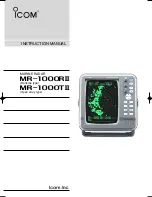
10
XP Transponders User Guide Rev 1.3
Sagetech XP transponders are plug-and-play compatible with many standard flight computers to simplify
operation and use. Currently MicroPilot, UAV Navigation, and Cloud Cap are working on updates.
Control of the transponder will be supported by each flight computer vendor
’s
documentation.
If you have a proprietary flight computer, data link, or other method of controlling the transponder,
please contact Sagetech for the Sagetech XP Serial Communication Document.
In installations where the transponder does not interface with a flight computer, a data link or other
method can control the transponder using the serial port.
Note
: When you connect the transponder interface cable to the transponder, tighten
the screws sufficiently so the connector does not loosen due to aircraft vibration.
GPS Interface
For XPS transponders with ADS-B Out, GPS data must be provided to the transponder from the aircraft
system integrator in one of two ways:
a)
GPS serial data streams on XP serial interface Com2. The data format is either NMEA GPRMC
format or the NexNav Mini GPS (
http://www.accord-technology.com/nexnav_mini.html
). Com2
is an RS-232 port defined in detail in Appendix C of this document. Using the external interface
also allows a faster GPS data rate and therefore slightly increased accuracy.
The XPG-TR variant of the Mode S transponder is preconfigured to automatically stream GPS
data from its internal GPS module, with signal coming from either its internal or an external
antenna.
b)
GPS data incorporated into the command and control protocol packets on XP serial interface
Com0. For more information on the serial command protocol, see the Sagetech XP Transponder
Serial Communication Document.
Note
: Sagetech recommends using the external Accord Technology NexNav Mini
receiver. It is the smallest TSO-C145c compliant receiver we have identified.
Note
: Do not implement both external GPS data to Com2 and flight computer GPS
data to Com0 at the same time. The GPS Source byte of the Installation Message
controls which interface is used. For more information, see the Sagetech XP
Transponder Serial Communication Document.
Antenna
The transponder should have its own antenna. An exception to this rule is use of a high quality diplexer
that enables antenna sharing between a transponder and certain ADS-B equipment. Further guidance
on diplexer use can be found in RTCA documents DO-282B and DO-260B, the minimum operational
performance standards for UAT and 1090 MHz ADS-B, respectively.
Summary of Contents for XPC-TR
Page 1: ...DOC7010R01 7 July 2014...







































